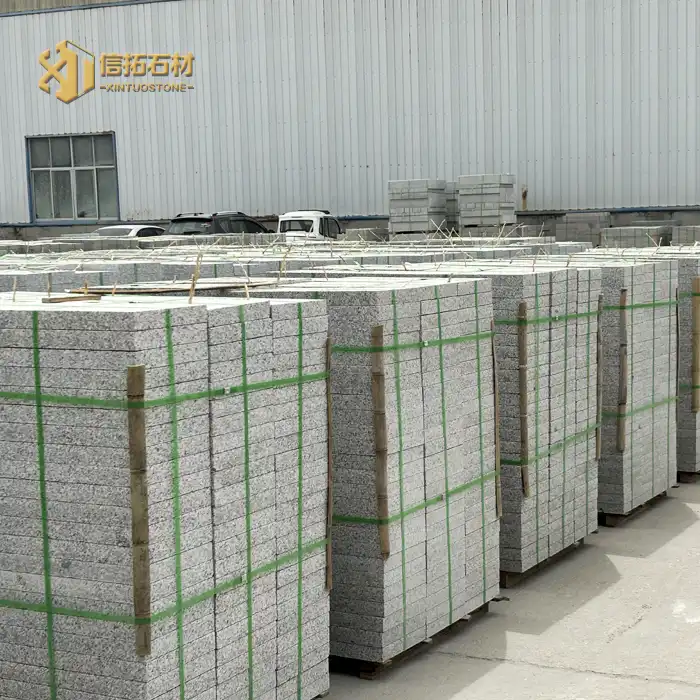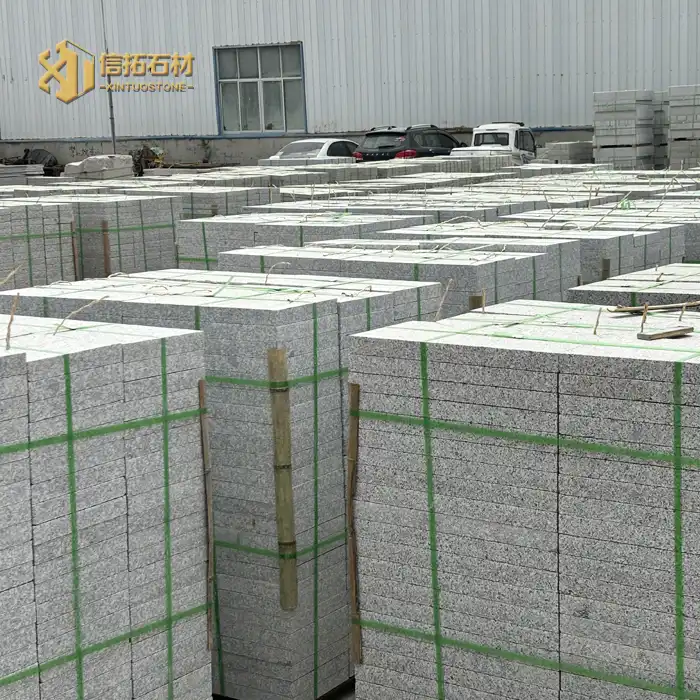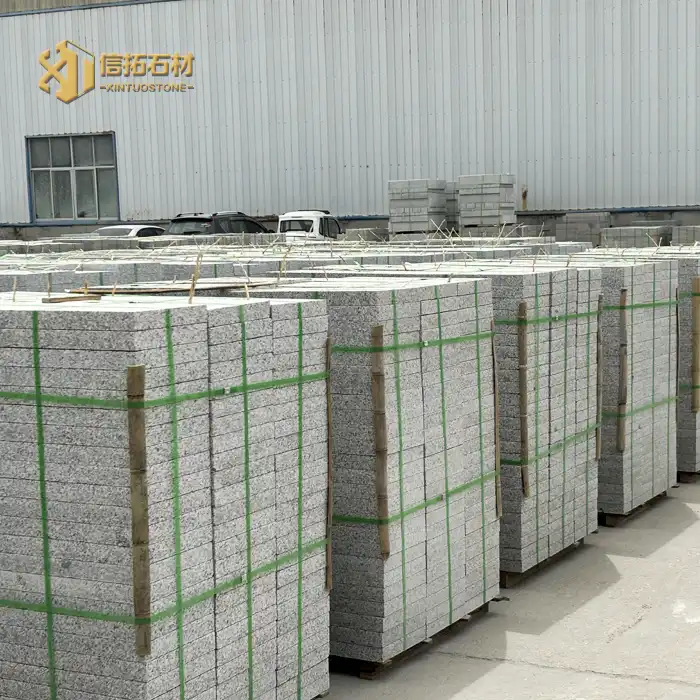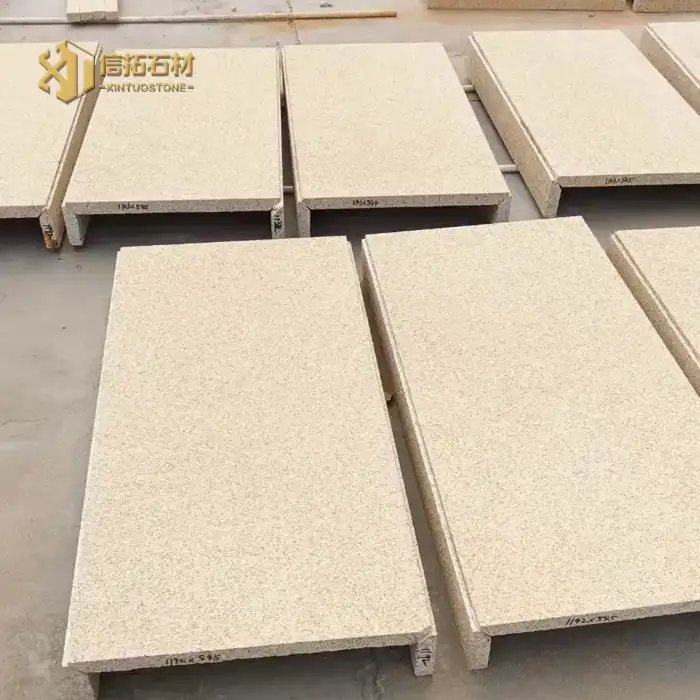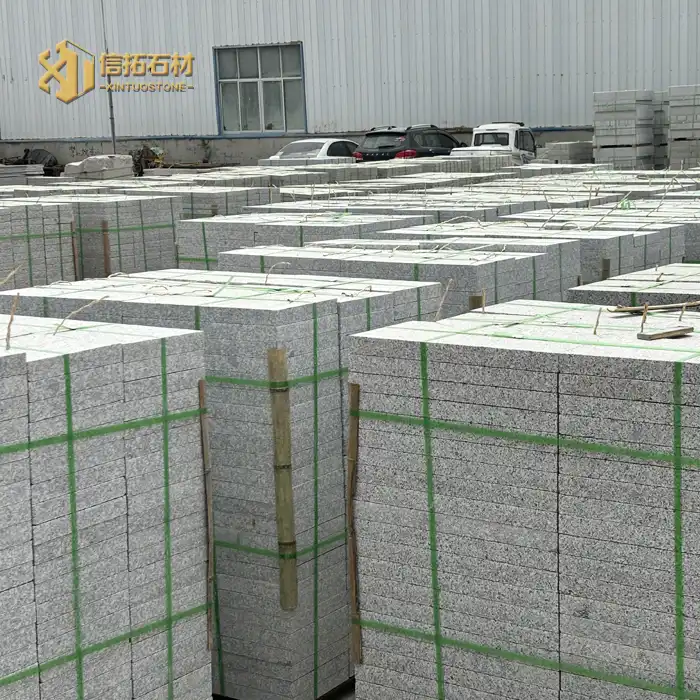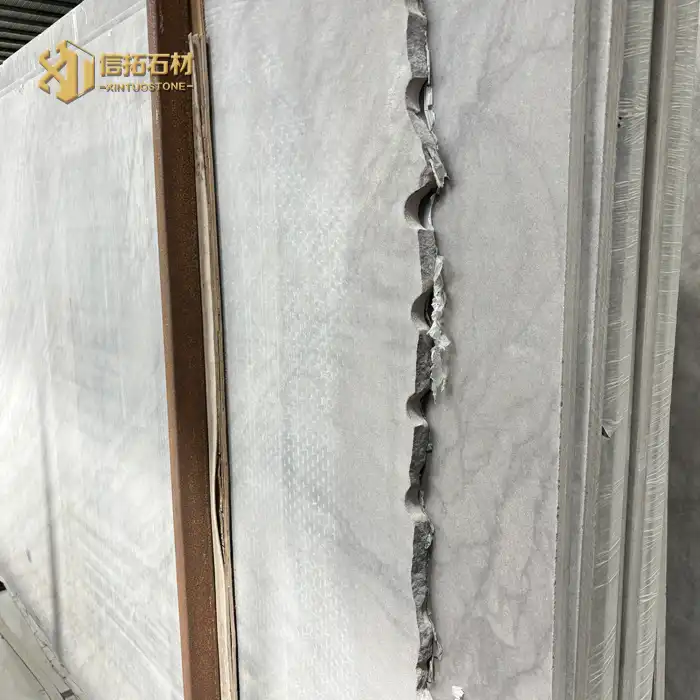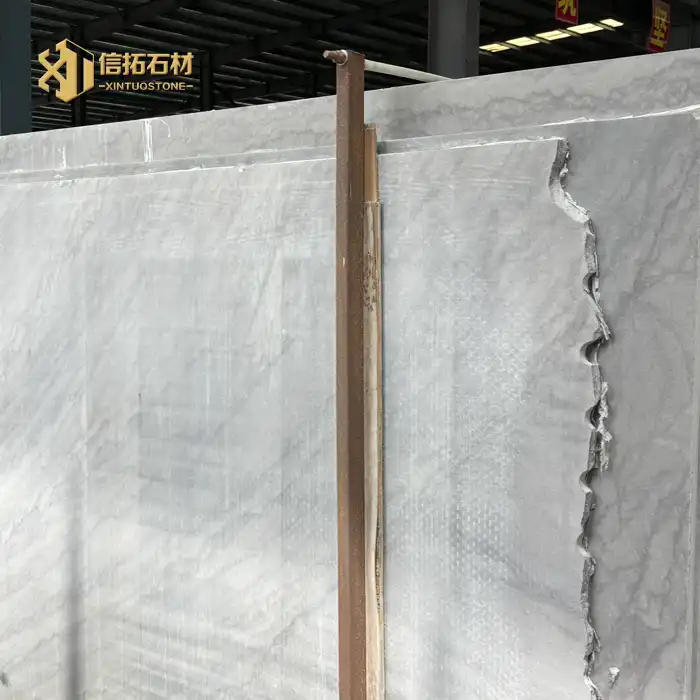Can Exterior Wall Hanging Stone Be Used in Modern Designs?
2025-07-18 08:54:28
Exterior wall hanging stone has long been associated with traditional architectural styles, but in recent years, it has gained popularity in modern design as well. This versatile material offers a unique blend of natural beauty and durability, making it an attractive option for contemporary buildings. As architects and designers seek innovative ways to incorporate natural elements into their projects, exterior wall hanging stone has emerged as a compelling choice. Its ability to add texture, depth, and visual interest to facades while providing practical benefits such as weather resistance and thermal insulation has made it increasingly popular in modern architectural designs. This blog post will explore the various ways exterior wall hanging stone can be effectively integrated into modern designs, discussing its advantages, applications, and the creative possibilities it offers to architects and homeowners alike.

How Can Exterior Wall Hanging Stone Enhance Modern Architecture?
Texture and Visual Interest
Exterior wall hanging stone can significantly enhance modern architecture by adding texture and visual interest to otherwise plain facades. The natural variations in color, pattern, and texture of stones like granite, marble, and limestone create a dynamic surface that catches light and shadow, bringing depth and character to modern buildings. This contrast between the smooth, sleek lines often associated with contemporary design and the organic, textured appearance of stone can create a striking visual impact. Architects can use exterior wall hanging stone to create focal points, accent specific areas of a building, or provide a harmonious backdrop for other design elements. The versatility of stone allows for various finishes, from polished and honed to flamed and brushed, enabling designers to achieve the desired aesthetic effect while maintaining a modern look.
Material Contrast and Juxtaposition
One of the most effective ways to incorporate exterior wall hanging stone in modern designs is through material contrast and juxtaposition. By combining stone with materials typically associated with contemporary architecture, such as glass, steel, and concrete, designers can create visually striking and innovative facades. For example, a sleek glass curtain wall can be complemented by sections of exterior wall hanging stone, creating an interesting interplay between transparency and solidity. This approach not only adds visual interest but also helps to soften the sometimes harsh or cold appearance of modern buildings. The natural warmth and texture of stone can provide a welcoming element to an otherwise minimalist design, creating a balanced and inviting exterior.
Sustainable and Eco-friendly Option
In an era where sustainability is increasingly important in architecture, exterior wall hanging stone offers an eco-friendly option for modern designs. Natural stone is a durable, long-lasting material that requires minimal maintenance and can withstand harsh weather conditions for decades. This longevity reduces the need for frequent replacements or repairs, making it a sustainable choice for building exteriors. Additionally, many stone suppliers, like Wulian Xintuo Stone Co., Ltd., employ environmentally responsible quarrying and production processes. The thermal properties of stone can also contribute to a building's energy efficiency, helping to regulate interior temperatures and reduce heating and cooling costs. By incorporating exterior wall hanging stone into modern designs, architects can create buildings that are not only aesthetically pleasing but also align with contemporary sustainability goals.

What Are the Practical Benefits of Using Exterior Wall Hanging Stone in Modern Constructions?
Durability and Weather Resistance
One of the primary practical benefits of using exterior wall hanging stone in modern constructions is its exceptional durability and weather resistance. Natural stones like granite and marble have high Mohs hardness ratings (6-7), making them resistant to scratches, impacts, and general wear and tear. This durability translates to a longer lifespan for the building's exterior, reducing maintenance costs and frequency of repairs. Exterior wall hanging stone can withstand various weather conditions, including extreme temperatures, heavy rainfall, and UV exposure, without significant deterioration. This resilience is particularly valuable in areas with harsh climates or coastal regions where buildings are exposed to salt spray. The ability of stone to maintain its appearance and structural integrity over time makes it an excellent investment for modern construction projects aiming for longevity and reduced lifecycle costs.
Thermal Insulation Properties
Another significant advantage of using exterior wall hanging stone in modern constructions is its thermal insulation properties. Stone has a natural ability to absorb and retain heat, which can help regulate the internal temperature of a building. During hot summer months, the stone facade can absorb heat from the sun, reducing the amount of heat transferred to the interior and thus lowering cooling costs. Conversely, in colder months, the stone can help retain heat within the building, contributing to energy efficiency. This thermal mass effect can lead to more stable indoor temperatures and reduced reliance on HVAC systems, resulting in lower energy consumption and operating costs. When combined with modern insulation techniques, exterior wall hanging stone can significantly enhance a building's overall thermal performance, aligning with contemporary energy efficiency standards and sustainable design practices.
Low Maintenance Requirements
The low maintenance requirements of exterior wall hanging stone make it an attractive option for modern constructions. Unlike some other exterior cladding materials that may require frequent painting, sealing, or replacement, stone facades generally need minimal upkeep to maintain their appearance and functionality. Most stone types used for exterior cladding, such as granite and limestone, are naturally resistant to staining and fading, preserving their color and texture over time. Regular cleaning with mild soap and water is usually sufficient to keep the stone looking its best. In the rare event that repairs are needed, individual stone panels can often be replaced without affecting the surrounding areas, making maintenance more straightforward and cost-effective. This low-maintenance characteristic is particularly appealing in modern architectural designs where clean lines and a pristine appearance are desired, as it helps maintain the building's aesthetic integrity with minimal intervention.
How Can Exterior Wall Hanging Stone Be Integrated into Various Modern Architectural Styles?
Minimalist and Contemporary Designs
Exterior wall hanging stone can be seamlessly integrated into minimalist and contemporary architectural styles by focusing on clean lines, simple shapes, and monochromatic color schemes. In these designs, large format stone panels with smooth, honed finishes can create sleek, uninterrupted surfaces that complement the overall minimalist aesthetic. Architects might choose light-colored stones like Sesame White or White Rust Stone to maintain a bright, airy feel typical of modern interiors. Alternatively, darker stones can be used to create bold, dramatic facades that serve as a counterpoint to large glass surfaces. The key to incorporating exterior wall hanging stone in minimalist designs is to use it sparingly and strategically, allowing the natural beauty of the stone to become a focal point without overwhelming the simplicity of the overall design. This approach can result in a sophisticated, timeless look that balances the warmth of natural materials with the clean lines of contemporary architecture.
Industrial and Urban Styles
In industrial and urban architectural styles, exterior wall hanging stone can add a raw, textural element that complements other materials commonly used in these designs, such as exposed concrete, metal, and reclaimed wood. Stones with rougher finishes, like flamed or bush-hammered surfaces, can mimic the rugged look of industrial materials while providing a natural counterpoint. For instance, using Golden Hemp or Yellow Rust Stone can create a warm, earthy tone that softens the often harsh appearance of industrial-style buildings. Architects might choose to combine different stone finishes or colors to create patterns or visual rhythms on the facade, adding interest to the building's exterior while maintaining an urban, edgy feel. The versatility of exterior wall hanging stone allows it to be used in various ways, from full facade cladding to accent walls or decorative elements, making it adaptable to different industrial and urban design concepts.
Biophilic and Nature-Inspired Designs
Exterior wall hanging stone is particularly well-suited for biophilic and nature-inspired modern architectural designs, which aim to connect buildings more closely with the natural environment. In these styles, the intrinsic qualities of stone - its organic textures, natural color variations, and connection to the earth - can be fully showcased. Architects might choose stones with distinctive patterns or fossil inclusions, like certain types of limestone, to create visually interesting facades that tell a geological story. The stone can be combined with living walls, water features, or extensive glazing to blur the lines between interior and exterior spaces, creating a seamless transition between the built environment and nature. In biophilic designs, exterior wall hanging stone can be used to create feature walls that mimic natural rock formations or to clad entire facades in a way that makes the building appear to emerge from the landscape. This approach not only enhances the aesthetic appeal of the building but also contributes to the well-being of its occupants by fostering a stronger connection to nature in urban environments.

Conclusion
Exterior wall hanging stone has proven to be a versatile and valuable material in modern architectural designs. Its ability to enhance aesthetics, provide practical benefits, and contribute to sustainability makes it an excellent choice for contemporary buildings. From minimalist to biophilic designs, stone cladding offers architects and designers a wide range of creative possibilities. As we continue to seek innovative ways to blend natural elements with modern architecture, exterior wall hanging stone will undoubtedly play a significant role in shaping the buildings of the future. For those looking to incorporate this timeless material into their projects, companies like Wulian Xintuo Stone Co., Ltd. offer high-quality products and expertise to bring your vision to life. For more information, contact them at sales@xintuostone.com.
References
1. Smith, J. (2021). "Modern Applications of Natural Stone in Architecture." Architectural Digest, 45(3), 78-85.
2. Johnson, A. & Lee, S. (2020). "Sustainable Building Materials: A Comprehensive Guide." Green Building Review, 18(2), 112-125.
3. Chen, X. et al. (2019). "Thermal Performance of Stone Cladding Systems in Contemporary Buildings." Energy and Buildings, 201, 36-49.
4. Taylor, R. (2022). "Biophilic Design: Incorporating Natural Elements in Modern Architecture." Journal of Architectural Innovation, 7(4), 215-230.
5. Brown, M. & White, K. (2018). "Durability and Maintenance of Exterior Stone Cladding." Construction Materials Journal, 32(1), 55-68.
6. Garcia, L. (2023). "The Renaissance of Stone in 21st Century Architecture." Modern Design Quarterly, 29(3), 92-105.
Send Inquiry
Related Industry Knowledge
- What Finishes Enhance Royal Ballet Granite in Interiors?
- How Slip-Resistant Is Cosmic Black Stone for Indoor Wet Areas?
- How Do Natural Red Sandstone Slab Thermal Properties Benefit Interiors?
- How Eco-Friendly Is Royal Ballet Granite for Interiors?
- How Does Granite Kerbstone Perform Under Heavy Traffic Loads?
- How Does Cosmic Black Stone Affect Room Ambiance and Light?
- What Are the Key Visual Features of Sandstone Cultural Stone?
- How Does Royal Ballet Granite Elevate Luxe Indoor Spaces?
- Is Cosmic Black Granite Durable?
- How to Clean Outdoor Granite Slabs?
 信拓_1747705273728.webp)

